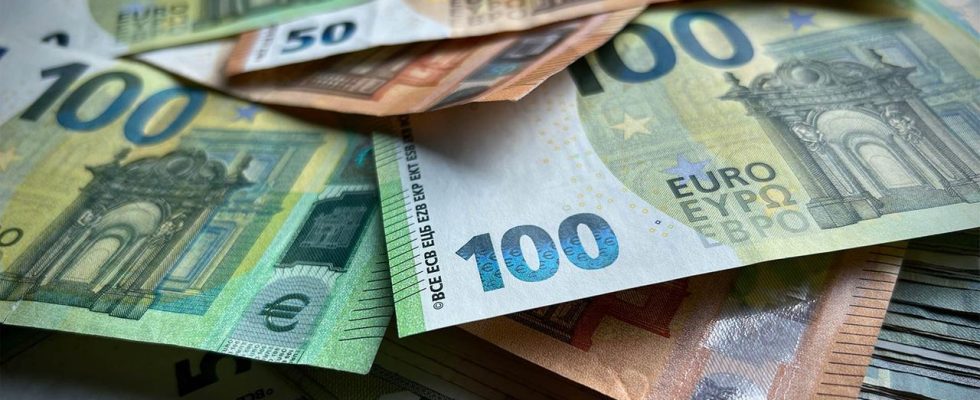Consumers not only look for sustainability on supermarket shelves, but also in their bank accounts. Some banks are offering exactly that: more climate protection, less oil and gas – and no weapons.
Many customers also want their bank to respect sustainability goals, social responsibility and commitment to climate goals or human rights. A number of smaller institutes have made sustainability their mission.
Only 15 banks are truly sustainable
However, just 15 banks meet the strict criteria Stiftung Warentest invested in “sustainable” banks in a recent survey. These include the GLS Bank, the Environmental Bank, the Ethics Bank, the Dutch Triodos Bank, which also has a headquarters in Germany, and a number of church institutes such as the Evangelical Bank.
In terms of total assets and number of customers, the institutions are among the smaller banks in Germany and Europe. Triodos Bank has around 746,000 customers in five European countries and has total assets of almost 16 billion euros. In comparison, the Frankfurt-based Commerzbank’s total assets were 517 billion euros last year; the bank has around eleven million private and corporate customers.
Certain industries are excluded
Expert Boštjan Krisper says tagesschau.dewhat the testers believe makes a “green” bank: “It is very important to us that sustainability plays a central role in the bank’s business model and that particularly controversial sectors and practices are excluded. We set this threshold as follows: At Banks must completely avoid the coal, nuclear power and weapons sectors. In addition, borrowers who have committed serious labor or human rights violations must be eliminated.
The so-called exclusion criteria of “green” banks often include genetic engineering and industrial animal husbandry. Social criteria such as child labor in companies also usually ensure that the relevant companies are avoided.
Financing solar parks or sustainable construction
In addition, many of the banks use “positive criteria” that specify the areas in which a sustainable bank wants to be involved, as Dirk Kannacher, board member at GLS Bank, explains: “Positive criteria are what we want to have a positive effect on society. These are For example, the financing of renewable energies or affordable housing, sustainable construction, but also the promotion of organic farming.”
A sustainable bank pursues its goals on two levels of its business policy: As with every bank, an important pillar is the granting of loans. At sustainable banks, loans to the excluded sectors mentioned are massively restricted or completely excluded. Conversely, companies from industries that meet the bank’s sustainability goals receive loans, sometimes with more favorable conditions.
Strict criteria also apply to fund products
In addition to granting loans, the “green” banks, like traditional commercial banks, invest customers’ money. This can be done through direct investments, for example in solar or wind farms. But a number of banks have also launched their own fund products. This includes Triodos Bank. Stiftung Warentest has also checked this, according to expert Krisper: “Even with the bank’s own investments, i.e. purchases of shares, corporate or government bonds, it is important for sustainably oriented investors that certain companies or countries are excluded from the project. This is possible For example, it concerns issues such as the death penalty, corruption or violation of democratic principles.”
Defense stocks or securities from companies that make money from fossil fuels are not included in the corresponding fund products. This has been a disadvantage for the returns of sustainable funds over the past two years. Because of the profits of weapons producers and oil multinationals, their prices on the stock market have recently risen significantly. Many stocks that were classified as sustainable, such as those in the wind and solar sectors, were left behind. “For us, the years 2022 and 2023 were rather challenging years for our fund products. But if you look at the long-term performance, we are developing our funds in line with the overall market,” says GLS board member Kannacher.
Current accounts and credit cards are usually available
But can a sustainable bank also replace your own bank? In many cases the answer is yes. Most “green” banks not only offer a current account for everyday payment transactions, but also bank products such as daily and fixed-term deposits, consumer loans or cards for cashless payments such as current, debit or credit cards.
So if sustainability is important to you in your bank account, or if you want to exclude certain sectors or topics when investing, you now have a number of alternatives to the classic house bank. However, he should inform himself thoroughly in advance about the bank’s respective sustainability approach, the product range and the conditions such as fees and interest rates.
Andreas Braun, HR, tagesschau, May 10, 2024 8:22 a.m

